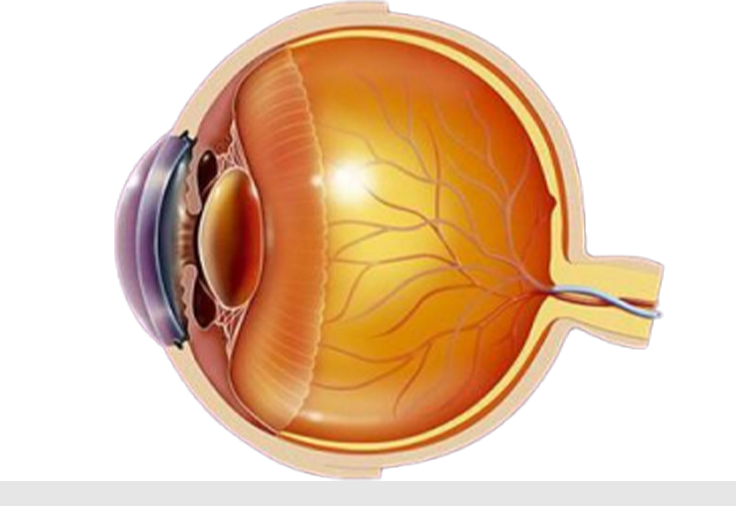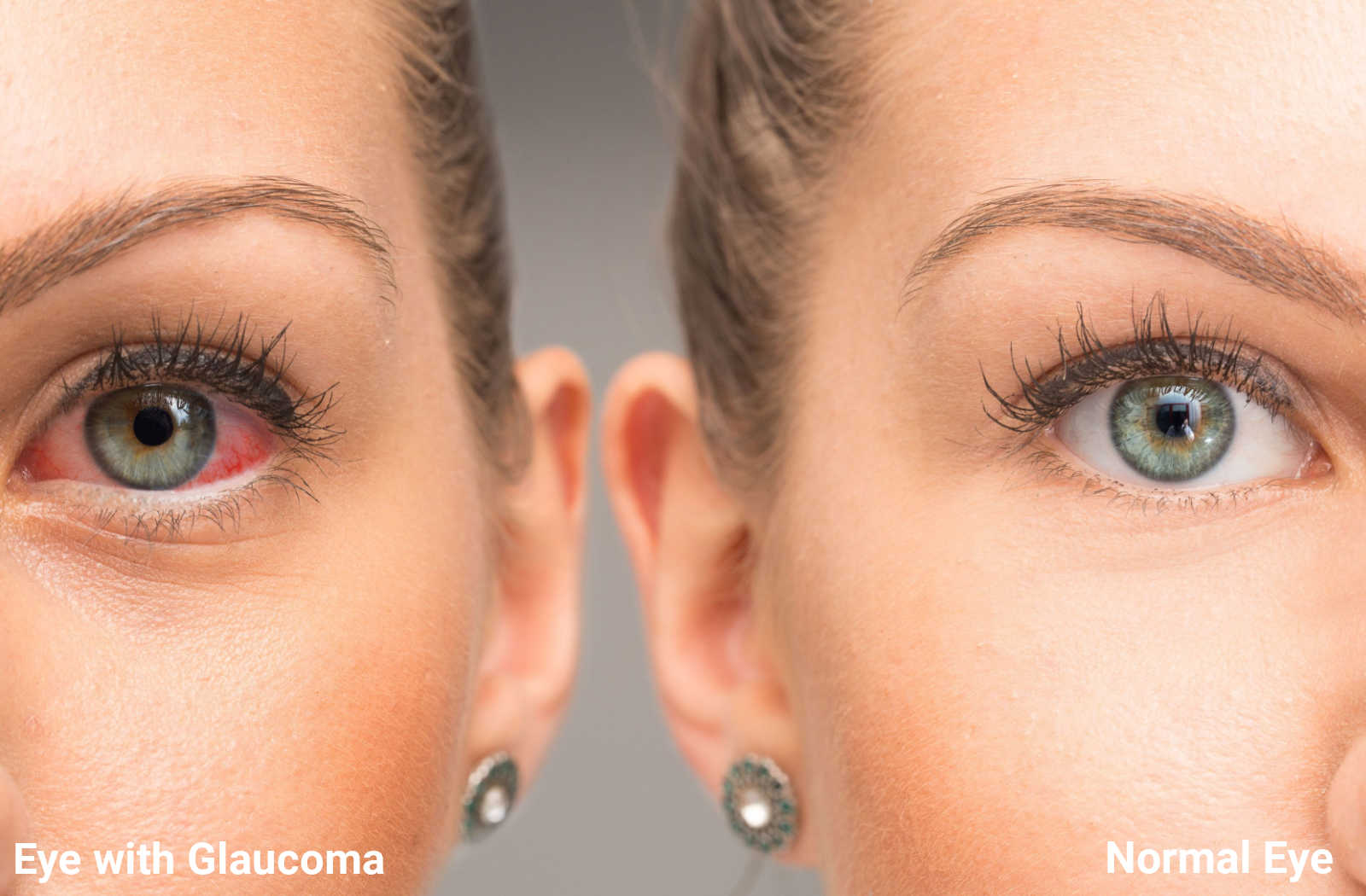Glaucoma

Glaucoma
Glaucoma: Symptoms, Diagnosis, and Treatment
What is glaucoma?
Glaucoma is a group of eye diseases characterized by increased intraocular pressure, leading to damage to the optic nerve and vision loss. Without timely treatment, glaucoma can cause irreversible changes to the eyes and loss of vision. It is crucial to detect glaucoma in its early stages to prevent serious complications.
Types of glaucoma
There are several types of glaucoma, the most common of which are:
* Open-angle glaucoma — the most common type, develops slowly and may not show symptoms for a long time.
* Angle-closure glaucoma — less common, but develops more rapidly and requires immediate treatment.
* Normal-tension glaucoma — optic nerve damage occurs at a normal level of intraocular pressure.
* Genetic glaucoma — an inherited form of the disease, more often seen in younger individuals.
Symptoms of glaucoma
In the early stages, glaucoma may progress without noticeable symptoms. However, as the disease advances, the following signs may appear:
* Gradual loss of peripheral vision.
* Decreased visual acuity.
* Eye pain or headaches.
* Blurred vision or the appearance of rainbow halos around light sources.
Diagnosis of glaucoma
Diagnosing glaucoma requires a comprehensive approach. In our center, modern examination methods are used, including:
• Measurement of intraocular pressure (tonometry).
* Examination of the optic nerve head using an ophthalmoscope.
* Visual field test — assessment of peripheral vision.
• Optical coherence tomography (OCT) — to evaluate the condition of the optic nerve and retina.
Early detection of glaucoma and regular monitoring of eye health help to avoid serious consequences and preserve vision for many years.
Treatment of glaucoma
Glaucoma treatment aims to lower intraocular pressure and prevent optic nerve damage. Depending on the type of glaucoma, treatment methods may include:
* Medication — the use of eye drops that help lower intraocular pressure.
* Laser therapy — laser treatment can be used to improve the outflow of fluid from the eye.
Laser trabeculoplasty
This is a minimally invasive procedure that uses a laser to enhance fluid drainage through the trabecular meshwork of the eye (a structure in the front part of the eye responsible for draining intraocular fluid). The laser works to widen or clear blocked areas, thereby improving fluid outflow.
Laser Iridotomy
This is a procedure in which a laser is used to create an opening in the iris of the eye. This helps to improve fluid outflow and lower intraocular pressure, especially in cases of angle-closure glaucoma, where the iris blocks the angle of the anterior chamber of the eye.
* Surgical treatment — there are several surgical methods for treating glaucoma, which are used depending on the type of the disease and the stage of its progression. Surgery aims to lower intraocular pressure and prevent optic nerve damage. Let's consider the main surgical methods for treating glaucoma:
Filtration Surgery (trabeculectomy)
This is one of the most common surgical methods for treating glaucoma, especially in cases of open-angle glaucoma. During the procedure, the surgeon removes a portion of the tissue layer in the cornea and sclera, creating a new channel for the outflow of intraocular fluid. This helps to reduce intraocular pressure.
Glaucoma shunt implantation
This method is used for treating glaucoma that does not respond to other treatment methods. During the surgery, a small shunt is implanted in the eye to assist with draining excess intraocular fluid and lowering intraocular pressure.
Minimally invasive glaucoma surgery (MIGS)
This is a group of innovative treatments that minimize surgery and shorten recovery time. They are glaucoma drainage microimplants (MIGS), special devices called MIGS (minimally invasive glaucoma surgery) that provide microinvasive treatments. MIGS technology for controlling ocular hypertension and treating glaucoma allows the least amount of manipulation of the eye tissues while maximizing the effect. Minimal intervention significantly reduces the risks of complications, shortens the postoperative period and the patient's recovery time.
An example of MIGS is the installation of a XEN device that creates a channel for fluid outflow.
Drainage surgery for glaucoma
This group of methods involves the use of various implants that create an alternative pathway for the outflow of intraocular fluid, helping to normalize eye pressure.
The main types of drainage surgery include:
• Ahmed Glaucoma Valve Implant
This is one of the most common implants used for treating glaucoma, particularly in complex cases. The Ahmed Valve is a small implant placed in the anterior chamber of the eye to create a pathway for intraocular fluid drainage. It consists of two parts: a valve and a reservoir. The valve regulates the fluid outflow, preventing hypotony (excessively low intraocular pressure). This implant is often used in cases of secondary glaucoma and when other treatment methods have proven ineffective.
• Molteno Implant
The Molteno implant is one of the oldest types of implants used in drainage surgery. It consists of a tube that is placed in the eye and a fluid reservoir positioned behind the eye. This implant is used to treat both primary and secondary glaucoma. The Molteno implant helps create an alternative channel for fluid outflow, effectively reducing intraocular pressure. It is often employed when other treatment methods do not achieve the desired results.
Bierveld Implant
The Bierveld implant is a less well-known but effective type of implant used in drainage surgery for the treatment of glaucoma. It consists of a small tube and a reservoir, similar to other drainage implants, but is distinguished by its unique design and materials, making it suitable for specific types of glaucoma. The Bierveld implant is often used in cases where other methods or implants have proven ineffective or are technically not feasible.
Advantages of drainage surgery:
* Long-term effectiveness: Implants provide reliable and sustained control of intraocular pressure.
* Suitable for complex cases: These methods are often used when standard treatment options are ineffective, including cases of secondary glaucoma and glaucoma with a high risk of complications.
* Reduced risk of vision loss: Successful implantation of drainage devices can significantly decrease the likelihood of vision deterioration and help maintain the patient’s quality of life.
Choosing a treatment method
The choice of surgical intervention depends on the type of glaucoma, its stage, the overall condition of the patient, and other factors. Surgical treatment for glaucoma should be tailored individually, following detailed diagnostics and consultation with an experienced ophthalmologist.
Important: Any surgical intervention requires professional preparation and careful post-operative monitoring to prevent complications and ensure an effective reduction of intraocular pressure.
Conclusion
Modern surgical methods for treating glaucoma allow for effective control of intraocular pressure and slowing the progression of the disease. However, it is essential to consult a doctor promptly for diagnosis and to choose the most appropriate treatment strategy.
Glaucoma prevention
To prevent glaucoma, it is important to keep regular checkups with your eye doctor, especially if you have a predisposition to the disease. The earlier glaucoma is detected, the more effective intraocular pressure can be controlled and vision loss can be prevented.
When to visit an ophthalmologist:
* From the age of 35 — if you have family members with glaucoma or belong to a high-risk group, such as those with hypertension or diabetes.
* From the age of 40 — it is recommended to have an initial eye examination with an ophthalmologist, even if you do not have obvious symptoms of glaucoma. This is the age when the risk of developing the disease increases.
* After the age of 60 — regular check-ups are important, as glaucoma most commonly develops in individuals over 60.
* High-risk patients (e.g., those with diabetes, myopia, hypertension, eye injuries, or after surgeries) should see a doctor for an eye check-up at least once every two years.
Why is it important to see specialists?
Glaucoma is a condition that may not present clear symptoms in its early stages. Therefore, regular examinations by experienced ophthalmologists are crucial for the early detection of the disease and the prevention of vision loss.
Our services
We offer a comprehensive range of diagnostic and treatment options for glaucoma, including:
* Consultations with experienced ophthalmologists.
* Modern diagnostic methods.
* Personalized treatment and prevention recommendations for glaucoma.
Schedule a consultation with our specialists to maintain your eye health and prevent the development of glaucoma!
Make an appointment for a consultation

